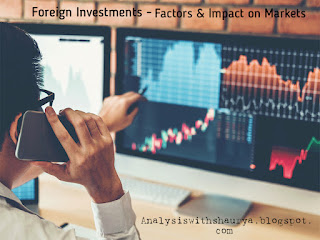Synergies in M&A: PVR Inox Post Merger Analysis
I. Introduction
According to the FICCI-EY report, the Indian media and entertainment (M&E) business rose by 20% in 2022 to reach INR2.1 trillion (US$26.2 billion), 10% more than its pre-pandemic levels in 2019.The M&E sector is further expected to increase at a CAGR of 10.5% to reach INR2.8 trillion in 2025, according to the report.
Pre-merger two of the biggest multiplex operators in India were PVR and INOX; with PVR leading the industry with a 32% market share and INOX being in the second place with a 23% share. The sale of movie tickets is the main source of income for these companies, while the sale of food and drink is their secondary source. Due to the pandemic's effects on their financial situation, the merger's strategic goal is to strengthen the financial position. The resulting business seeks to combine the best aspects of both companies, quicken the rate of expansion into Tier 2 and Tier 3 cities, and improve overall business efficiency.
II. Post-Merger Integration
Q2 of FY 2024 has been one of the strongest quarters ever experienced by the merged company, with exceptional financial results. One of the main elements that contributed to it were the benefits of synergy following merger integration.
A. Revenue Synergies
A revenue synergy occurs when two companies are combined and as a result can sell more products &/or services in total than they would have otherwise achieved separately.
In Q2 FY24, the revenue of PVR Inox increased by 53.3% to 1.999.9 crores from 1305 crores in Q1 FY24. It shows that the post integration benefits in terms of revenue synergies have started reflecting in the financial performance of the company.
The merged entity was able to add 46 new screens in the first half of FY24, and is planning to add another 104-119 screens in the coming quarters. Inox focuses on central and eastern regions of India while PVR dominates north, south, and western parts of India. The merger has helped the entity to become largest cinema Exhibition Company in India, thus helping them to expand in tier 2 and tier 3 cities and increasing their revenues.
Exhibit 1: Post merger revenue synergies increased the revenue by 53% in Q2 FY24
.png)
B. Cost Synergies
The second kind of synergy in M&A transactions in cost synergies, which represent the opportunity to reduce overall costs of combining businesses.
During the first half of FY24, the synergy benefits on overhead costs such as personnel, housekeeping, and security totaled 17-21 crore as the merger enabled the company to eliminate organizational redundancies such as duplicate positions and departments.
According to the company's presentation, PVR Inox saved between ₹1, 04,000 and ₹1, 28,000 per screen during the first half of FY24. Post-merger, due to better bargaining power, the company has negotiated better deals with its suppliers, which has resulted in lower procurement costs. In addition, the company is now able to cross promote films on a larger number of screens, thus advertising costs are minimized.
While the overhead cost per screen increased 2.6% year on year to 2.44 million (244.4 lakhs) in the first half of FY24, it was 2.38 million in the first half of FY23. The increase was significantly lower than the 7-8% increase in overhead costs that the company would have seen in the absence of the merger. The primary reason behind this is that the company is now sharing resources like IT infrastructure and personnel across its expanded network of screens.
Exhibit 2: Employee cost (as a percent of revenue) fell to 8.40% post-merger
.png)
C. Operational Efficiencies & Financial Synergies
The integration of PVR and INOX is progressing seamlessly and is yielding substantial operational efficiencies. The company has been able to reduce its net debt by 328 Crores[5] in the first half of FY2024, which firmly places them on the path to attain a free cash flow positive status by the end of FY2024.
The merger has also helped the company to reduce the variability of earnings, which has led to more stable revenues. Additionally, the company has been able to achieve significant synergy benefits, which have had a positive impact on the company's operating margins. According to the company, EBITDA (Earnings before Interest, Taxes, Depreciation, and Amortization) synergy benefits ranged from 124 crore to 143 crore in the first half. Once the full synergy benefits are realized, it should have an impact of at least 200 basis points on the company's operating margins.
Collectively, all of this could lead to reduction in the cost of borrowing for the company, due to synergies, larger balance sheet and improvements in cashflows. This is defined as Financial synergies.
Exhibit 3: Operating margins rose up by 120 basis points due to operational synergies post-merger
.png)
D. Management & Shareholding
In the PVR Inox merger, merging company was Inox and surviving company was PVR. Hence shareholders of Inox were issued 3 (three) fully paid up equity shares of INR 10 each of PVR for every 10 (ten) fully paid up equity shares of INR 10 (Indian Rupees Ten) each held by them in INOX.
Post-merger the shareholding of promoters is around 27% and that of public is at 72%.
Exhibit 4: The promoter share of Inox would fall from 44.04% to 16.66% and that of PVR would fall from 17% to 10.62% post-merger.
.png)
Key Management Personnel:
The total strength of the board is decided to be 10 (ten) with the promoter families of both INOX and PVR having equal representation with 2 (two) board seats each. Following are some key personnel in the board of directors of PVR Inox.
|
Name |
Pre-Merger |
Post-Merger |
|
Pranav Jain |
Chairman, Inox Group |
Chairman, PVR Inox |
|
Ajay Bijli |
Chairman & MD PVR |
Managing Director |
|
Sanjeev Kumar Bijli |
Jt MD, PVR |
Executive Director |
|
Siddhartha Jain |
Director, Inox |
Non-executive director |
III. Challenges
A. Risks from CCI
PVR and Inox were not required to seek CCI approval for the deal as the revenues of Inox were below 1000 crores, which is below the regulator's threshold levels. But later if CCI find that the merger has eventually led to consolidation in industry then the company may have to divest certain screens as PVR had to do in the PVR-DT cinemas deal in 2016, which was much smaller as compared to PVR-Inox merger deal.
B. OTT Threat
OTT has emerged as an appealing platform for low-budget films and web series because it allows them to release films at a lower cost. OTT also provides viewers with convenience because they can watch movies and other content at their leisure in the comfort of their homes. It also has the advantages of binge watching. This makes rise of OTT platforms a big threat for PVR Inox.
IV. Conclusion
An important step forward in the Indian media and entertainment sector has been the combination of PVR and INOX. Following the merger, the combined company became India's biggest multiplex operator, dominating the entire nation. The merger has produced significant synergies in terms of revenue, cost, and operational efficiency. With revenue up 53.3% and operating margins up 120 basis points in the first half of FY24, the company has seen impressive financial results. By the end of FY2024, the company plans to attain a positive free cash flow status.
Nonetheless, the business must contend with a number of obstacles, such as the CCI's regulatory risks and the threat posed by OTT platforms. To continue being a leader, the business must address these issues.
References:
ET Bureau. (2023b, May 3). Indian M&E sector crossed Rs 2 trillion revenue mark in 2022: FICCI EY report. The Economic Times
PVR Earnings call Q2 FY24
Jauhari, U. (2023b, October 19). PVR Inox Earnings: Post-merger operational efficiencies visible with EBITDA synergy benefits at ₹124-143 crore in H1 | Mint. Mint.
Text is subjected to copyright. You can use the text but kindly do not publish this content.



Comments
Post a Comment
Text is subjected to copyright. You can use the text but kindly do not publish this content.